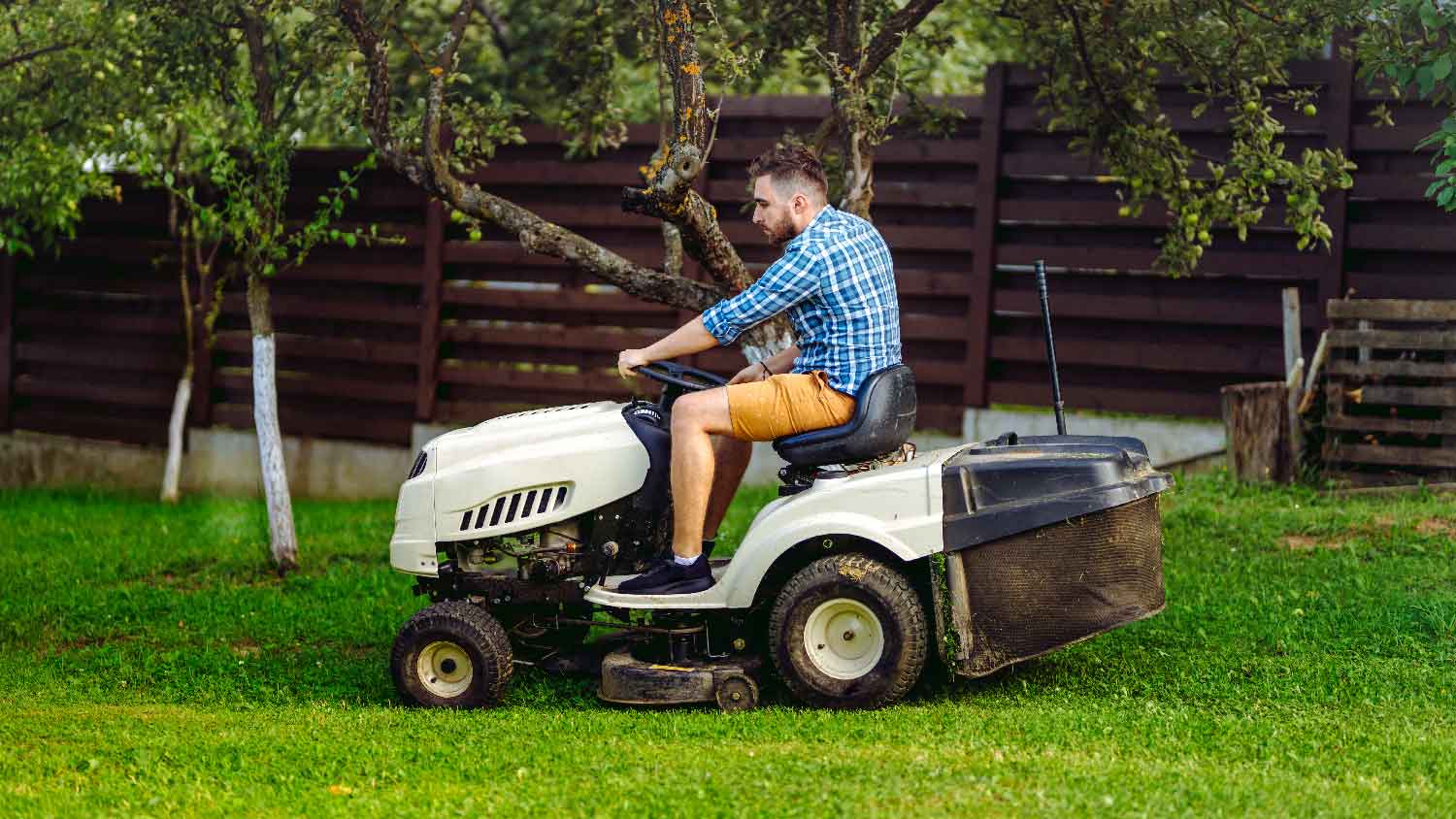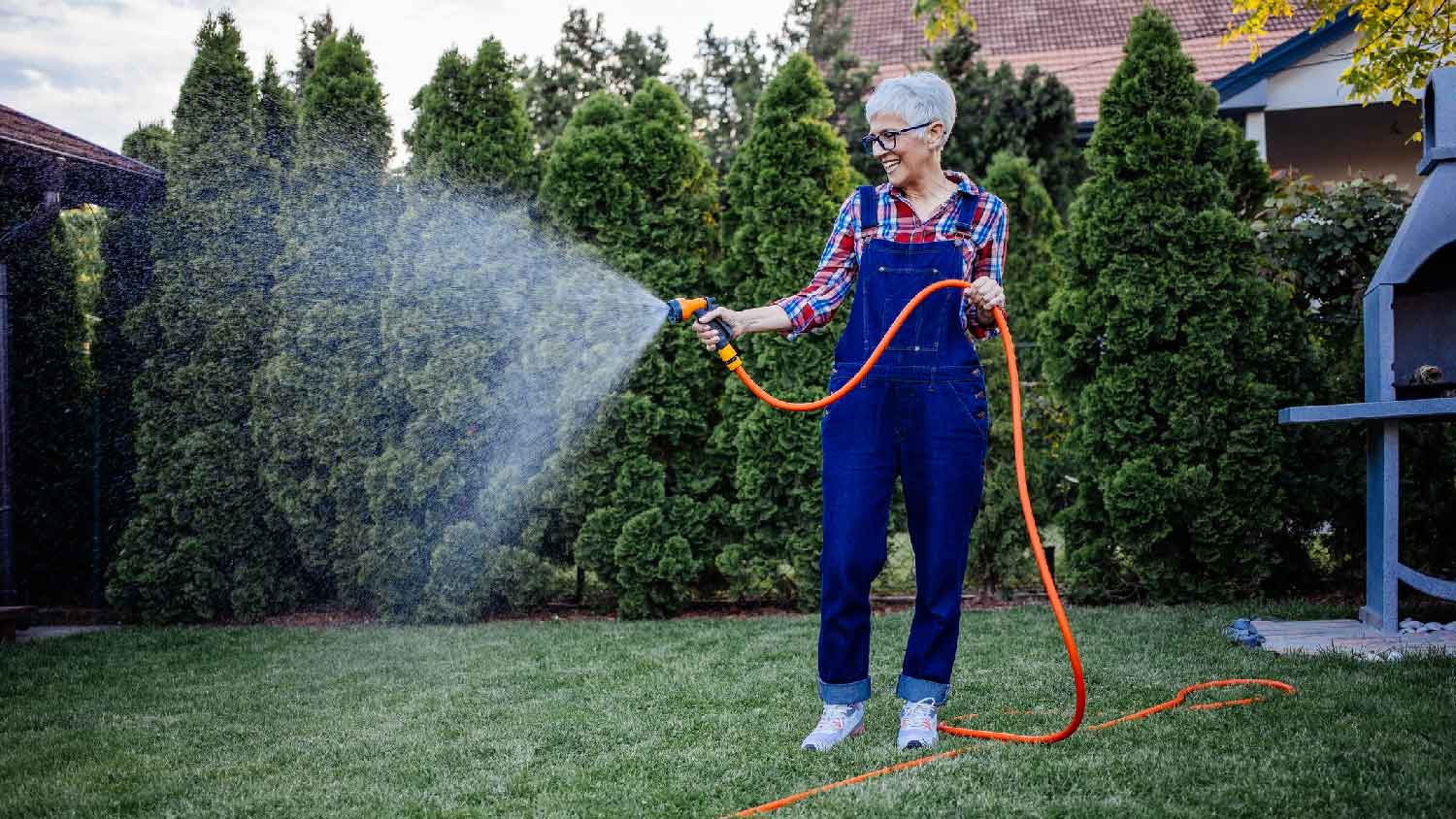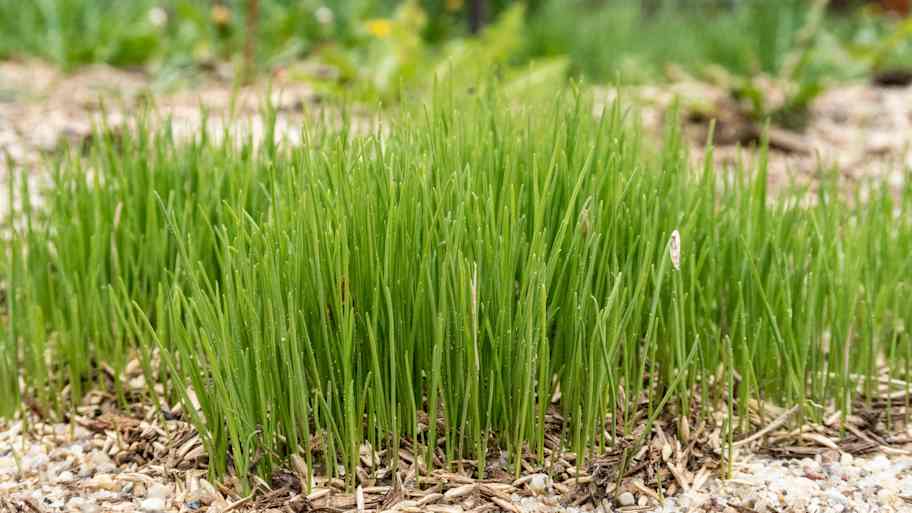
Discover average lawn aeration cost, key price factors, and tips to save. Get a clear estimate for your yard and learn how to choose between DIY and hiring a pro.
If power seeding is good enough for a golf course, it’s good enough for your lawn


Although it can feel overwhelming to see a patchy lawn, reviving it to bring back lush waves of vibrant green grass is achievable for homeowners. In fact, you can help your grass look as healthy as the local golf course by using the same trick they do for vibrant grass: power seeding. Learn how to power seed a lawn, from prepping your landscape and buying seeds to using a slice seeding machine.
Power seeding is a process of seeding, or adding grass seed to a lawn. It is sometimes called slice seeding or slit seeding. Where overseeding involves applying grass seed over the landscape, power seeding uses a specialized machine to slice small rows through the lawn and push seeds into those small rows. This means the seeds have better soil contact, which increases the chance of germination.
Power seeding works best for thin or patchy lawns. For a lawn that just needs a little boost, regular overseeding or even aerating can help improve soil health and give grass that lush, green look.
Power seeding may range from $400 to over $7,900 depending on the size of the lawn, with the average cost of power seeding around $1,470. The cost will also depend on the type of grass seed, with cool-season grasses like fescue or clover starting around $3 per pound and warm-season grasses like centipede grass or bahia starting around $6 per pound.
When it comes to lawn care, there are many regular tasks to keep in mind, like when to aerate the lawn (once or twice per year) and when to seed. If you’re power seeding a lawn, this can be done about once every year or two. Like aerating, power seeding is typically the best to do in the early fall, which gives the grass seed time to establish before the first frost of winter.
But beware of when it is too late to aerate or seed the lawn. You shouldn’t aerate or power seed when your grass goes dormant, usually in late fall or winter. The young grass needs to have about six weeks to develop and strengthen its roots, but it can’t do that with cold, wet winter weather.
Power seeding is a straightforward process, but it requires specialized equipment that can be heavy to handle and maneuver. This job is best left to a lawn seeding pro, but if you’re willing to do the work (and pay the cost of renting or buying the machine), follow these steps to power seed your lawn.
Start by selecting the proper grass seed for your lawn. You should opt for the grass your lawn already has for a uniform look. If you live somewhere that gets cold in the winter, you’ll want to choose cool-season types of grass. If you live somewhere with warmer year-round weather or drought-prone areas, go with a warm-season grass seed.
Aerating a lawn and seeding often go hand in hand. Aeration helps break up compacted soil, which can help air and water reach grass seeds and roots. Before you start power seeding, you may want to either learn how to aerate the lawn or hire a pro to help with aeration. It’s not required, but it can give your grass seeds a better shot at growing.
Because you’ll need to push the power seeding machine across the lawn, it’s important to clear away any debris, like children’s toys, rocks, twigs, or other objects from the lawn. You can also pull weeds at this time, which will help prevent the weeds from outcompeting young, germinating grass seeds.

With the lawn all cleaned up, mow your grass lower than you usually do. The height will vary based on your grass type, but aim for about one to two inches high. Because mowing lower can stress the grass, mow two or three times ahead of power seeding to gradually mow it down to one or two inches and minimize stress.
Sprinkler heads are often buried low enough that you won’t hit them with a lawn mower, but because the power seeding machine cuts slightly into the soil and pushes seeds down into the dirt, it can hit and damage your sprinkler heads.
If you’re learning how to power seed a lawn yourself, do as the pros do and mark your sprinklers with yard flags or other markers, so you know where to avoid while using the slit seeder.
With all of the prep work out of the way, it’s finally time to actually power up the power seeder. The prep work is the hardest part. With the power seeder, you’ll just need to fill it with the appropriate amount of grass seed, then follow a path to seeding around the lawn.
The power seed machine has a hopper, otherwise known as a seed holder. Machines can have different holding capacities, so be sure to fill your power seeder to the appropriate capacity.
Depending on the type of seed you’re using, you’ll need the machine to drop a certain amount as it moves across the lawn. Consult the power seeder manual or the label on your grass seed packaging. Your power seeding machine may have a label on the hopper that advises what seed setting to use. Set the appropriate seed setting on the power seeder gauge.
Turn the seeder on, and engage the lever that allows the machine to release seeds. Push the power seeder along the lawn, moving from one end of the lawn to the other, avoiding any sprinklers or other obstacles you may have marked.
The slice seeder will create rows of seeds spaced about two to six inches apart, so you may want to overlap when starting a new row to ensure you don’t miss any spots. Depending on the amount of seed the machine holds, you may need to pause from time to time to refill the grass seed.
After completing the yard with rows all going in one direction, start again, making rows that are perpendicular to the first rows. After this round, make sure to run the machine around the perimeter of your lawn, which is easy to pass over when seeding.

After you’ve finished power seeding with the machine, apply fertilizer to your lawn and water the lawn thoroughly to give the seeds a good starting point for growth. Then, watch as new grass begins filling in your lawn as the days and weeks go by.
Power seeding is best for lawns with thinning grass or large patches of grass that have died off. You can power seed regularly for a lush lawn, but regular lawn maintenance will also minimize the risk of grass thinning or patches sprouting up around the yard.
Aeration pokes holes in the lawn and pulls out small plugs of soil. Compacted soil becomes looser through this process, allowing more water, nutrients, and air to reach plant and grass roots. Regular aeration about once or twice a year can help improve the health of your soil and, in turn, your lawn.
Thatch is a natural layer of organic matter, like grass clippings, that is in the process of decomposing. It sits right at the base of the grass where it meets the soil. A little bit of thatch is natural, but when it builds up, it can choke out the grass stems and leave your lawn looking brown. Use a dethatching rake to remove thatch about once per year.
Both under-watering and over irrigation can damage a lawn, so it’s important to give your yard the right amount of water, especially after planting grass seed. Water the lawn well after power seeding, then follow up by watering it lightly once or twice a day until the grass begins growing in about five to six weeks.
Fertilizer can help restore nutrients to your lawn, which will boost soil health and help your new grass grow. The amount of fertilizer you’ll need and when to fertilize depends on your grass, soil, and climate. In general, you can expect to feed your lawn with fertilizer at least twice per year.
To power seed a lawn yourself, you’ll need to either rent a power seeder for about $75 to $200 per day or buy one at $3,000 to $15,000. You’ll also need to purchase grass seed for about $3 to $10 per pound. Lawns will need about four to eight pounds of grass seed per 1,000 square feet or about 175 to 250 pounds per acre.
Not only do the pros already have the pricey equipment necessary to do the job, but they can also calculate the optimal amount of grass seed for your lawn based on the type of seed and the size of your lawn. Hiring a local lawn seeding company is the most efficient way to complete a power seeding job. Not only that, but if you DIY and don’t use the machine correctly or miscalculate the amount of grass seed, you’re likely to waste money on seeds that don’t end up germinating.
From average costs to expert advice, get all the answers you need to get your job done.

Discover average lawn aeration cost, key price factors, and tips to save. Get a clear estimate for your yard and learn how to choose between DIY and hiring a pro.

Get transparent power seeding cost info to learn what impacts pricing, how to save, and whether to DIY or hire a pro for your lawn’s best results.

Discover average hydroseeding cost, key price factors, and ways to save. Get transparent estimates for your lawn project and make informed decisions for your home.

When your grass keeps dying where a tree used to be, it’s likely because there is a nutrient deficit in the soil in that area. Here’s how to fix it.

When it comes to drop spreaders versus broadcast spreaders, knowing the differences between them will help you make the right choice for your outdoor setup.

Ready to give your yard a fresh start? With these tips for grass seed planting, your lush lawn dreams are one step closer to becoming a reality.